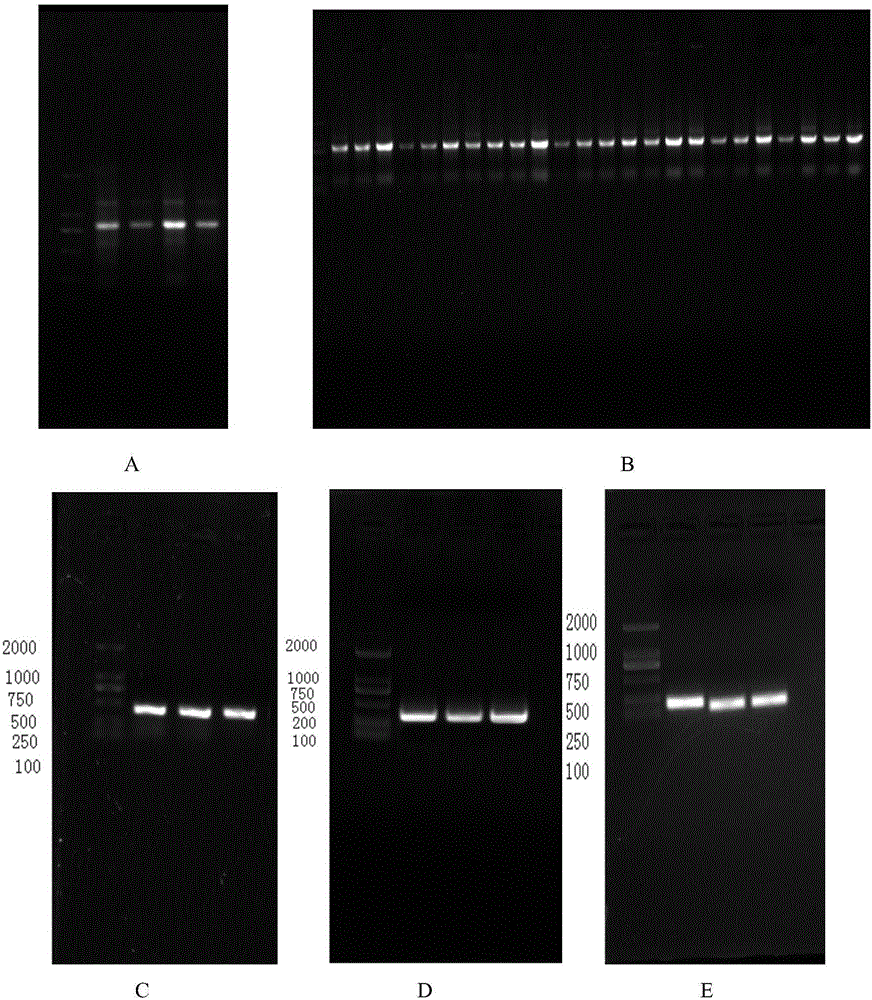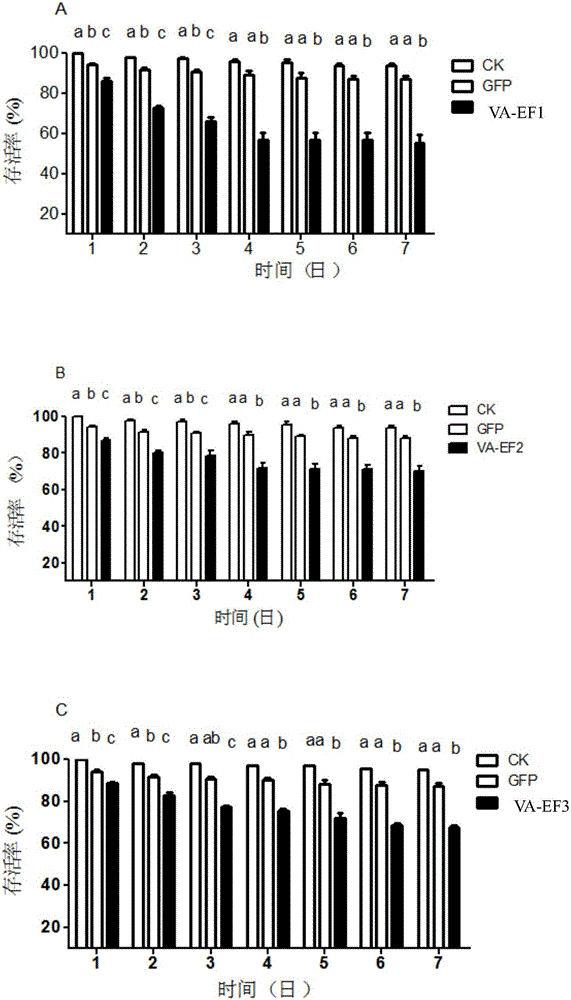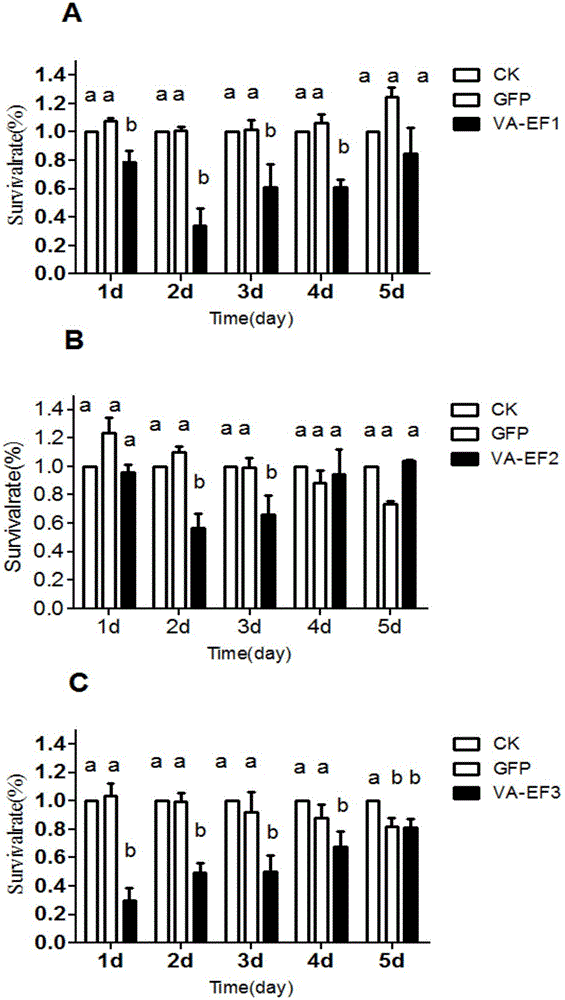Apolygus lucorum V-ATPaseE gene and application of apolygus lucorum V-ATPaseE gene to aspect of RNAi (ribonucleic acid interfere)-mediated pest control
A pest control and chlorotic bug technology, applied in application, genetic engineering, plant genetic improvement, etc., can solve problems such as increased pesticide use, environmental pollution, and chloropylon lack of Bt protein, etc.
- Summary
- Abstract
- Description
- Claims
- Application Information
AI Technical Summary
Problems solved by technology
Method used
Image
Examples
Embodiment 1
[0025] Example 1 Cloning of ApoV-ATPaseE gene, availability of ApoV-ATPase, dsRNA microinjection and feeding experiment
[0026] Sequencing of the turn green group of A. lucorum and bioinformatics analysis of ApoV-ATPaseE gene.
[0027] Our laboratory performed sequencing of the trans-green group of A. lucorum in advance, and successfully obtained 63029 gene sequences of A. lucorum, and annotated 25,760 gene sequences of them. Using bioinformatics technology and related online software to analyze the transcriptome data of A. lucorum, the ApoV-ATPaseE gene of A. lucorum was determined with the help of online programs such as NCBI Blast.
[0028] The sequencing results are shown in SEQ ID NO:1.
[0029] 2. Collection of test insects and tissues
[0030] L. lucorum was reared using fresh corn (ZeamaysL) and green beans (Phaseolus vulgaris L.) by the Institute of Plant Protection, Chinese Academy of Agricultural Sciences. The rearing temperature is 25-28℃, the relative humidity is 60%-70%,...
PUM
 Login to View More
Login to View More Abstract
Description
Claims
Application Information
 Login to View More
Login to View More - R&D
- Intellectual Property
- Life Sciences
- Materials
- Tech Scout
- Unparalleled Data Quality
- Higher Quality Content
- 60% Fewer Hallucinations
Browse by: Latest US Patents, China's latest patents, Technical Efficacy Thesaurus, Application Domain, Technology Topic, Popular Technical Reports.
© 2025 PatSnap. All rights reserved.Legal|Privacy policy|Modern Slavery Act Transparency Statement|Sitemap|About US| Contact US: help@patsnap.com



